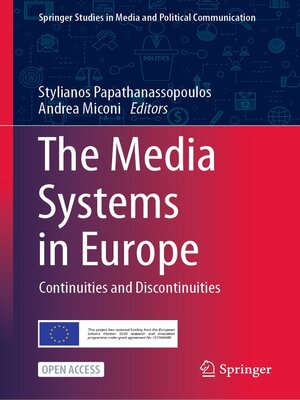The Media Systems in Europe
ebook ∣ Continuities and Discontinuities · Springer Studies in Media and Political Communication
By Stylianos Papathanassopoulos

Sign up to save your library
With an OverDrive account, you can save your favorite libraries for at-a-glance information about availability. Find out more about OverDrive accounts.
Find this title in Libby, the library reading app by OverDrive.



Search for a digital library with this title
Title found at these libraries:
| Library Name | Distance |
|---|---|
| Loading... |
This open access book traces the evolution of the European media landscape in the last 30 years, from 1990 to 2020. It is based on the theoretical classical hypotheses of regional media systems provided by Hallin and Mancini and at the same time puts them to test. The book further defines the proportions between geocultural patterns – national, regional, European, and global – to outline evolutionary trends in media landscapes. It analyzes to which degree European media have become more European, in the historical course of administrative unification and breaks the results down into concrete indexes and indicators.
The book discusses the media systems of the member states of the European Union through a regional perspective, identifying similarities, differences, as well as their convergence in the digital age. It sheds light on the evolution of media systems in Europe, introduces existing relevant theoretical perspectives, and offers an overview of the new developments in European media.
The book will appeal to students, researchers, and scholars of political science, communication, media, cultural, and policy studies, as well as practitioners and professionals interested in a better understanding of the European media landscape's evolution.
The book discusses the media systems of the member states of the European Union through a regional perspective, identifying similarities, differences, as well as their convergence in the digital age. It sheds light on the evolution of media systems in Europe, introduces existing relevant theoretical perspectives, and offers an overview of the new developments in European media.
The book will appeal to students, researchers, and scholars of political science, communication, media, cultural, and policy studies, as well as practitioners and professionals interested in a better understanding of the European media landscape's evolution.







